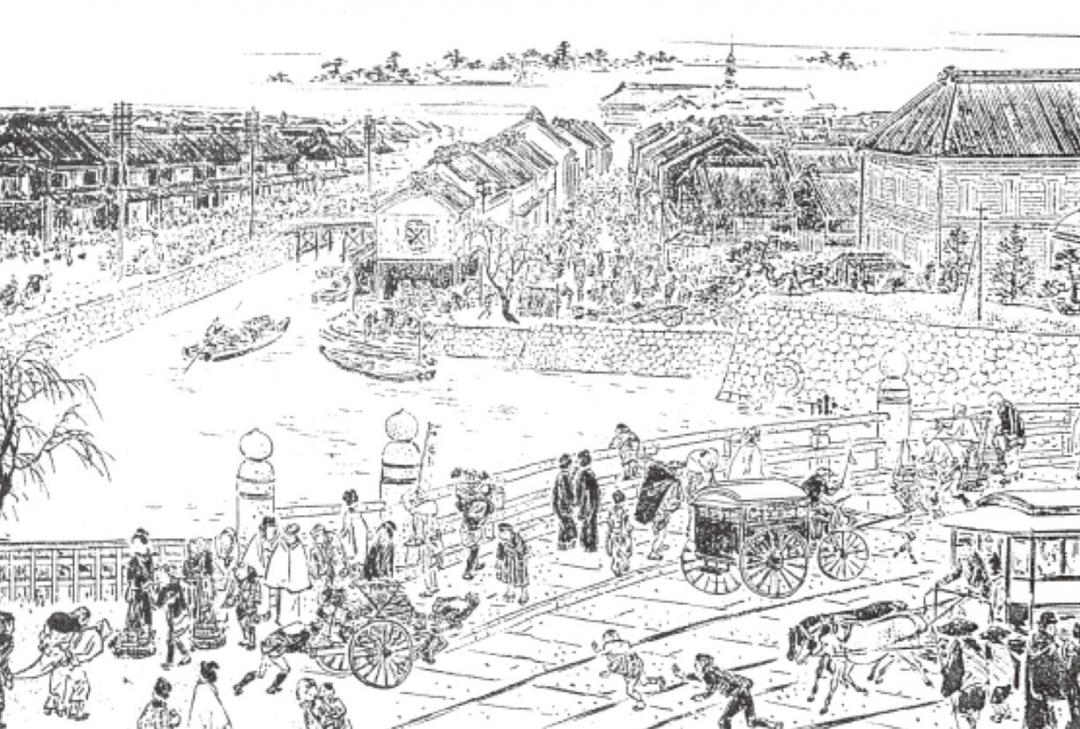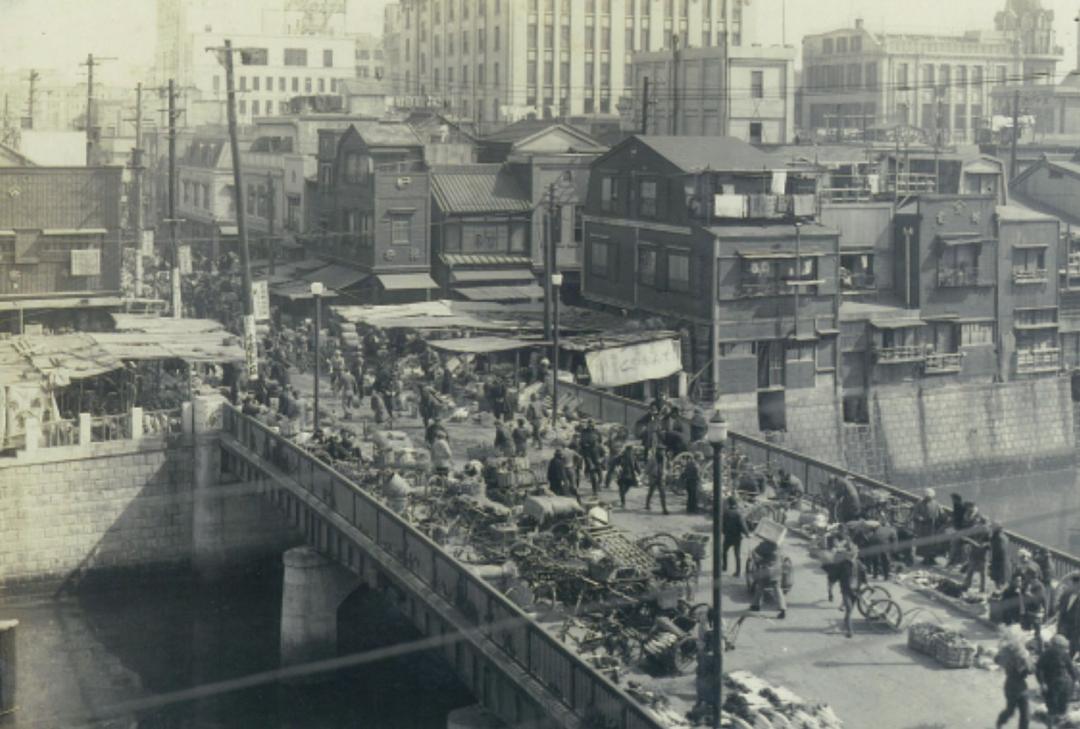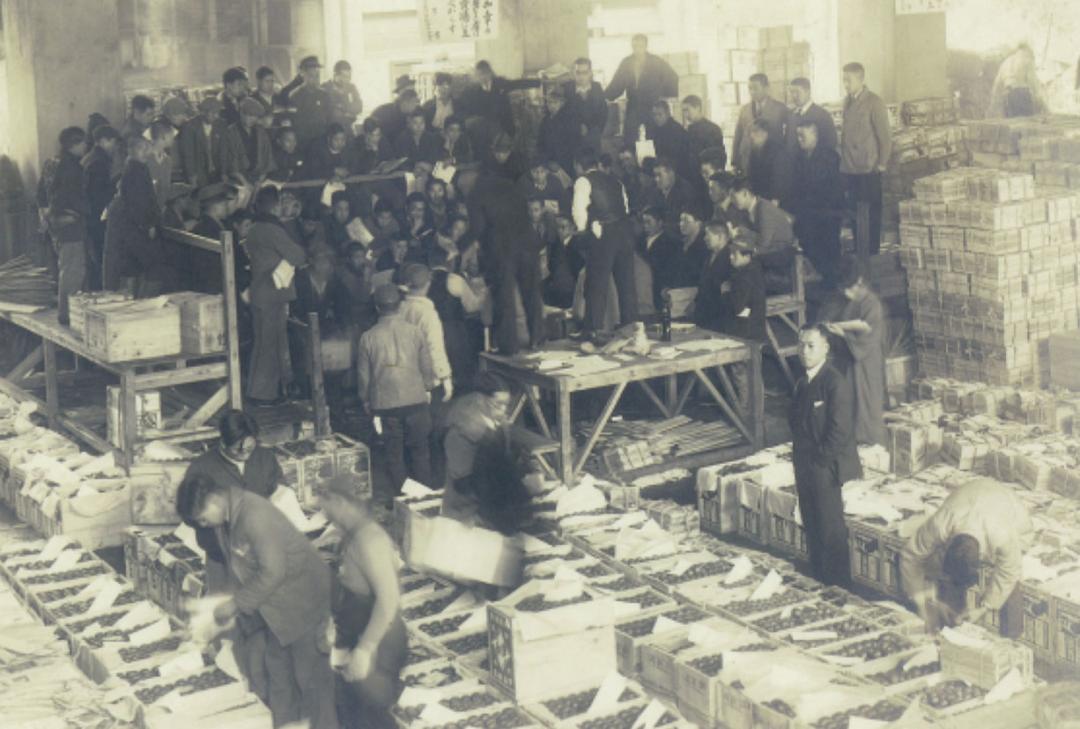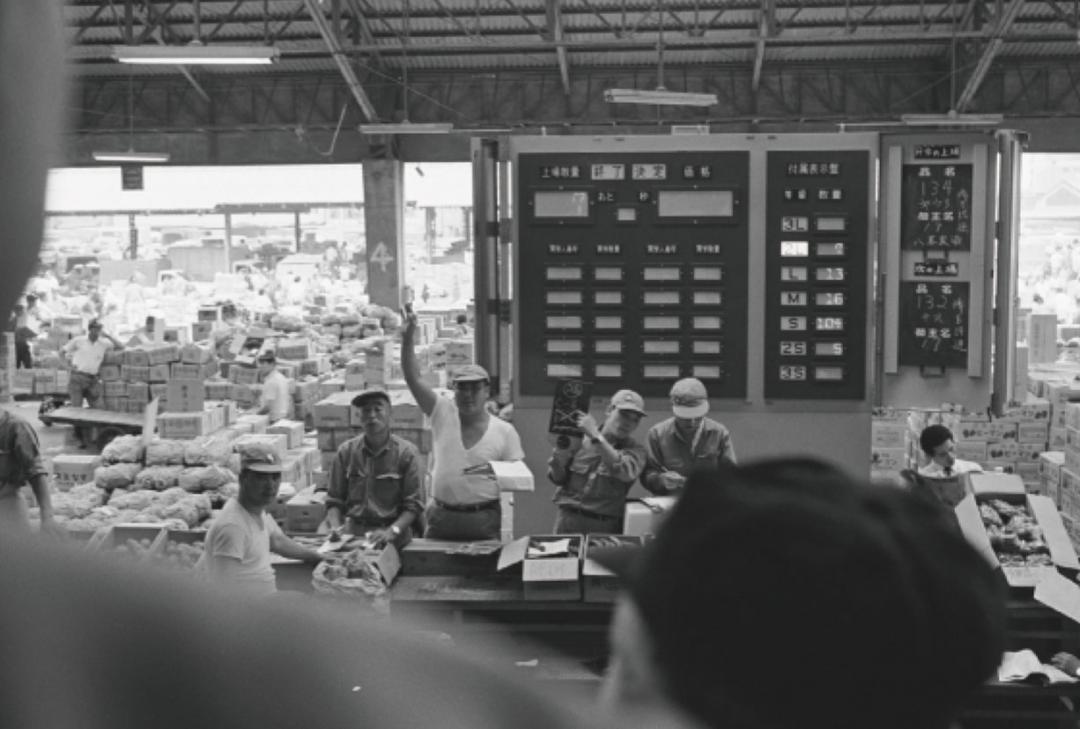History of fruits and vegetables

Kyobashi Daikon-Gashi, the Origin of the Vegetable Market in Tokyo
(Early Edo Period)
The Vegetable Market is said to have been started by several merchants in Sukiyabashi (around Yurakucho, Chiyoda-ku today). "The market was then relocated to the north bank of the Kyobashi River, where water transport was available. The Vegetable Market was named Daikon-Gashi, as many radishes or daikon were delivered there,and then renamed to Kyobashi Daikon-Gashi Market. "
The photo shows a monument to Daikon-Gashi in Kyobashi, Chuo-ku.

Kyobashi Aomono Market, Expanded Vegetable Market with Wooden Shops and Houses
(Edo Period to Meiji Era)
In the Meiji era (1868-1912), the Daikongashi became known as the Kyobashi Aomono Market, then the largest market following the Aomono Market in Kandatacho (the roots of the current Ota Market). The bridge in the front is the Kyobashi Bridge. The wholesale shops lining both sides of the road in the back are one- or two-story wooden buildings that doubled as shop and residence.

Great Kanto Earthquake Fire Destroyed the Kyobashi Market
1923
On September 1, 1923, Tokyo City was hit by an earthquake with a magnitude of 7.9. The Kyobashi Aomono Market was completely destroyed by the resulting fire.

Reconstruction after the Earthquake
(Early Showa Era)
After the earthquake, the Kyobashi Aomono Market was gradually restored through the efforts of wholesalers and other businesses. The renewed three-story wholesale building was used as: a venue for transactions (first floor), a lodging place for shippers from distant places (second floor), and accommodations for workers (third floor). Piled high in the center of the photo are the New Year's first boxes of mandarin oranges.

Kyobashi Market on the Eve of Relocation to the Tsukiji Area
While the fish market in Nihombashi was relocated to Tsukiji after the Great Kanto Earthquake, the Aomono Market continued to operate in Kyobashi until 1935. The photo shows vegetables traded on the Konyabashi Bridge over the Kyobashi River. Records show that the number of buyers at Kyobashi Aomono Market―which was about 1,000 per day around 1925―had doubled around this time.

The Beginning of Operations at Tsukiji Market
1935
In February 1935, the Tsukiji Main Market of the Tokyo Central Wholesale Market opened. The Kyobashi Aomono Market was also relocated there, and started to operate as the Tsukiji Market's Fruit and Vegetable Section. The photo is an auction scene at the wholesale area of the Fruit and Vegetable Section. The many boxes of mandarin oranges displayed convey the enthusiasm at the auction.

Fruit and Vegetable Section after World War II
(around 1950)
After the end of WWII, about a quarter of the Tsukiji Market was requisitioned by the General Headquarters of the Allied Forces (GHQ). Because the market's wholesale area was being used as the military's laundry facilities, the fruit and vegetable section rented space in the facilities of the Marine Products Section. In the center of the photo is what is believed to be a GHQ truck, and at top left is a sign reading Fruit Section.

Resumption of Auctions with the End of the Wartime
(around 1950)
As a wartime measure, the government fixed the prices of not only seafood, but also fruit and vegetables, and adopted the food rationing system. This made auctioning unnecessary. After the war ended, restrictions were removed for fruit and vegetables earlier than for seafood, and auctioning returned to the market.

Fruit and Vegetable Section during the Period of High Economic Growth
(around 1970)
Tokyo's population skyrocketed while Japan's economy experienced rapid economic growth. The volume of transactions at the Tsukiji Market increased year by year, and the place became busier. The photo shows auctioning using an electric bulletin board.

"Takarabune", the Traditional New Year Opening Display at Tsukiji Market
The Takarabune, or treasure boat, symbolizes the first market of the year at the Fruit and Vegetable Section of the Tsukiji Market. The boats are decorated with various vegetables, fruit and lucky charms, such as the annual Oriental zodiac sign, gift money, and old gold coins. The Toyosu Market's Fruit and Vegetable Section strives to enhance the market's brand appeal by building on the history and tradition starting from Kyobashi and passed down to the Tsukiji Market.

